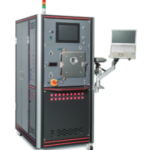
When you hear the word ‘vacuum’, you probably associate it with space.
Although the word seems like a very distant event, it is actually used in our daily lives and it is classified into five types according to atmospheric pressure.
Air pressure? Vacuum? This article explains the different types of vacuum in an easy-to-understand way for those who are allergic or freeze at the mere mention of these words.
What is a ‘vacuum’ anyway? If you would like to know more, please click here.
Extreme high vacuum
An extreme high vacuum is one where the atmospheric pressure is below 10-8 Pa.
Incidentally, Pa represents pascal and is used as a unit of pressure.
One atmospheric pressure, which is the pressure at the surface of the earth where we live, converts to 101325 Pa.
10-8 Pa equals to 0.00000001Pa, so the pressure is one in 10,000,000,000,000 of the pressure near the ground.
There is rather little air.
It refers to a vacuum at the space level, and industrial applications are only just beginning.
Ultrahigh vacuum
An atmospheric pressure of 10-5 Pa to 10-8 Pa is called an ultrahigh vacuum.
Ultrahigh vacuum is 10-5 Pa to 10-8 Pa (0.00001 to 0.00000001 Pa).
The atmospheric pressure near the ground is equal to one part in 10,000,000,000 to 10,000,000,000,000.
The pressure will be so low that it is equivalent to flying out of the earth and into outer space.
High vacuum
High vacuum is defined as a vacuum where the atmospheric pressure is between 10-1 Pa and 10-5 Pa.
This is 0.1 to 0.00001 Pa, so the air pressure is much higher than in an ultrahigh vacuum.
Still, the air is 1/1,000,000 to 10,000,000,000 times thinner than near ground level.
Middle vacuum
A vacuum with an atmospheric pressure of 102 Pa to 10-1 Pa is classified as middle vacuum.
The is 100-0.1 Pa, which means that the air is between 1,000 and 1,000,000 parts thinner than the air.
Low vacuum
Low vacuum is a vacuum at an atmospheric pressure between 105 Pa and 102 Pa.
100,000-100Pa, much closer to 101325Pa of the pressure near the ground.
However, it is also said to have a wider range, as it refers to the thinness of the air to one thousandth of a degree below ground level and with lower atmospheric pressure.
At 103 Pa to 102 Pa, the air feels much thinner, as it corresponds to per stratosphere, where airplanes fly.
We provide various types of equipment, including sputtering equipment that creates a high vacuum level of 10-5 Pa and performs film deposition.
For more information on our vacuum equipment, click here.




